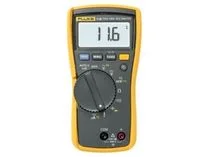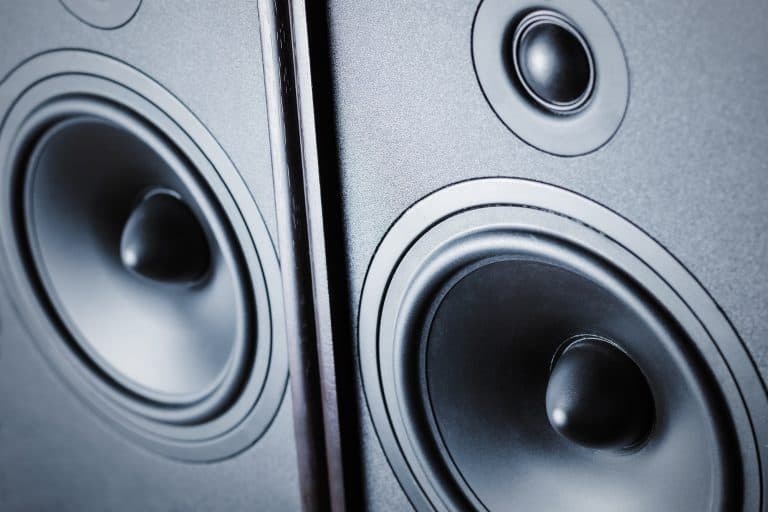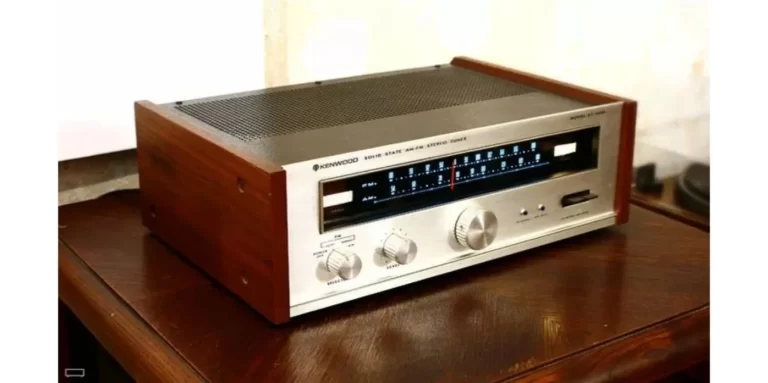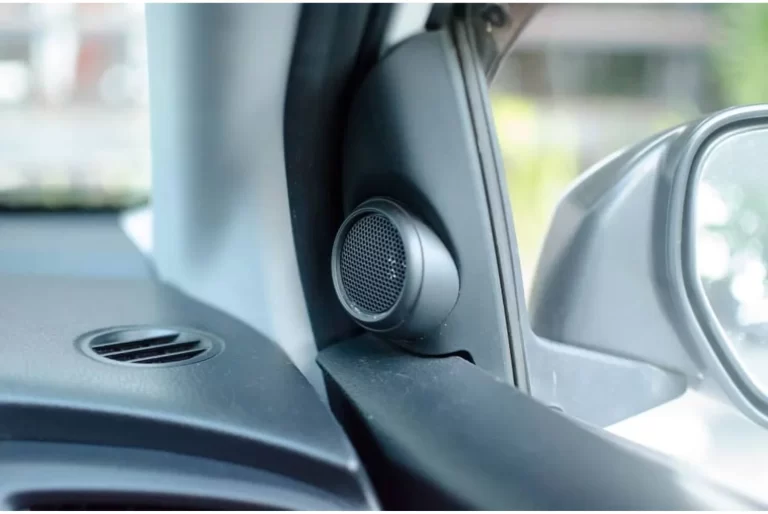How to Test Car Speaker Wire Polarity with Multimeter?
The automotive audio system is often difficult to diagnose due to its difficult accessibility. How to test car speaker wire polarity with multimeter? Speaker wires are typically concealed in the engine bay, which means that panel removal and other parts are required, including gas tanks and brake lines.
Most car audio loudspeakers are connected to the car stereo with two wires. Usually, one wire is positive (+), and the other is negative (-). If not connected properly, these speaker wires can cause damage to the car stereo and speakers. In addition to damage, improper speaker wire connection can even cause the car to catch fire!
Without proper, correct polarity, your car’s audio system will not work properly, which would be a waste of your time and money. In this case, you can check polarity with a multimeter. In this article, I’ll show you the steps of testing proper speaker wire polarity.
In a nutshell, you need a multimeter and speaker wire to test speaker polarity.
How to Test Car Speaker Wire Polarity With Multimeter?
Tools you need
- Multimeter
- Pair of wire strippers
- Wiring harness for speaker
Speaker Wires
Before you plug your car speakers into the battery, make sure you are certain of how good your speaker wires are. Test speaker wires with a multimeter is an easier way to identify errors in the lines so that you’re not wasting time troubleshooting later on.
Positive and Negative Wires
The positive terminal of the amplifier is connected to the positive terminal of the speaker. Similarly, the negative output is also connected to a negative terminal on the speaker unit.
Steps for testing speaker wires polarity using a multimeter
Then you can begin to check both the negative and positive wires of the speaker. This is why it is so critical to make a test successful.
Disconnect the Speaker
Disconnecting a speaker wiring is often as simple as removing smaller components, such as small panels or unfastening clamps.
For some speakers, you may even have to remove larger components, such as the entire front panel, but this also depends entirely on how your car’s audio system has been set up.
Turn on the Car Radio Head Unit
Turn the car’s stereo system on and turn up the volume to increase the battery voltage.
Set Multimeter

First, take the large knob at the center of the multimeter and turn it around until it reaches the symbol marked with a capital “V” and a straight line on top of it. (Set a pin on your multimeter to the small DC Voltage preset (200mV) and read the voltage.) This is your digital multimeter’s DC voltage setting.
However, never use a digital multimeter when testing for polarity because connecting the leads wrong can destroy your device.
Touch the Wires with Probe
Take your multimeter and touch the red lead of the multimeter to one wire and the black lead of the multimeter to another wire.
Touch the red probe of the multimeter to one wire, then touch the black probe to another. Now watch the meter’s value.
If the meter shows a positive number, it means that you have your probes crossed; that is, the voltage is interpreted as coming in one direction when in fact, it’s coming from the opposite direction. Switch your probes and try again. In fact, why don’t you do this again now?
Compare Each Speaker Results
Repeat this test for each speaker, then compare the results to see how they’re doing. For example, if one set of wires from your car to a specific speaker has two red and black wires, you should double-check that each is plugged into its half of the speaker with one red probe on one side and one black probe on another side.
Replace Faulty Parts
Replace any faulty parts. If reconnecting the wires from the internal speaker and power jack doesn’t make speakers working correctly, there could be a bigger issues with your speaker or the wireing of your mainboard.
Frequently Asked Questions
How do I check if a speaker wire is positive or negative?
Normally positive wires are red while grounding, or negatives are black. The speaker wiring does not come in color. Generally speaking, there’s no difference between a positive and a negative perspective.
How do you check car speaker wire polarity?
Even if the effects of reverse polarity are not noticeable so long as all speakers are wired correctly, it is essential to wire each speaker correctly whenever you connect any device with an amplifier.
How to test for positive and negative speaker wires with a multimeter?
After knowing basic information about using a multimeter for the DC voltage measurement in an automobile, we are ready to proceed.
Since the battery is connected to wires, you should touch one wire with your test leads. If the test lead and wire’s polarities are the same, you will see a positive reading on your screen (across the resistors).
This means that when your test lead touches a wire and you see a positive reading from your multimeter, you’re touching the negative wire. The same goes if you were using your negative test lead and saw a negative reading on your other multimeter.
By doing this, we can see that both wires are connected to a pole of the battery which causes opposite polarities because one wire has a positive charge while the other has an opposite negative charge.
Can Speaker Polarity Affect Sound Quality?
OR
Can Incorrect Speakers polarity Damage Speakers?
While it is recommended that you always wire speakers correctly, the effects of a miswire can vary depending on the situation. In some situations, a miswiring will cause no perceptible problems, but it might cause serious problems in other situations.
Inverted polarity is not dangerous to speakers or amplifiers. Some people say that it is because they claim that the voltage of the signal doesn’t change and, therefore, there’s no harm done. This isn’t an accurate explanation, though.
Since your speakers are wired according to a certain standard and wiring configurations themselves aren’t interchangeable, you need to follow the labeling when it comes to wiring up speakers.
If you don’t, things won’t work acoustically quite as well, but your equipment will not be damaged. It won’t cause any adverse effects on loudspeakers or amps.
No matter how many articles you may have seen about this with regard to maintenance and the possibility of damage, your equipment can rest easy when it comes to reversing polarities – unless, of course, you’ve miswired them manually!
What happens when the speaker’s polarity is inverted?
When the cable between the amplifier speaker is crossed, the speaker polarity is reversed. The speaker moves inward when it should be outward when it should go inward.
A sound signal generated from a speaker is exactly the opposite of a microphone. What changes are possible with sound?
What is speaker wire polarity, and how does it work?
Speaker polarity refers to the positive speaker terminal and negative terminals on a car audio system; a speaker itself will have either a + or – sign stamped into its exterior casing to denote which wire should be connected in each earphone of the sound system.
A negative polarity probe is used when taking measurements from a car speaker. Connect the red clip to the positive terminal and the black probe to the negative terminal.
Instead, you’ll be able to see by the wires on each speaker terminals which ones are for ground and power. Black indicates ground, and red indicates power.
Is my speaker dead? OR How to measure with multimeter if my speaker is dead?
I guess detailed visionary explanation would work better here. So I’ve my expert friend in the specific field and he’ll explain it to you better.
Precautions To Take While Testing Car Speaker Wire With Multimeter
While multimeters are good for testing the speaker wires, failing in these instructions can be harmful or damaging. Below are general precautions when evaluating speaker cables by a multimeter. Ensure proper calibration of the multimeter during each usage. The smallest damage can lead to malformed results.
Exposure to the components of the multimeters can lead to serious injury. The probe should remain sealed properly; even small damage may require the purchase. Replacement of a multimeter on a damaged part ensures you are safe and guarantees an accurate reading.
Conclusion
When it comes to testing speakers with multimeters, it is advisable to use multimeters and test them for the proper functioning of the amplifiers and receivers. If you are experiencing sound quality problems that can affect your audio systems, follow the above steps to be corrected quickly.
Car speakers really are a complicated task to test, but they’re not that bad if you know what to do. To start testing your car speaker, first, you want to check the wires and amplifier. Then look at the place where your speaker is located. Listen for any damage and if there’s no damage, then take a battery or multimeter test.
Reference:







![How Much Does it Cost to Install Car Speakers? [Detailed Table]](https://carstereoplayer.com/wp-content/uploads/2022/05/Untitled-design-2022-05-22T002955.177-768x514.webp)
